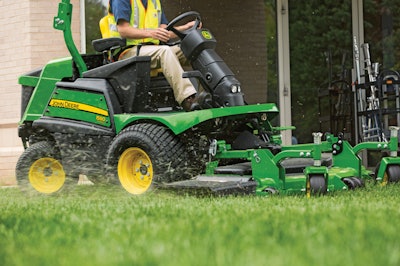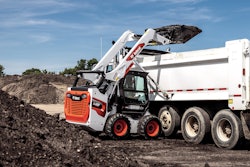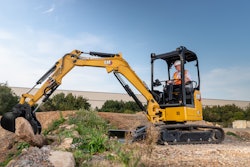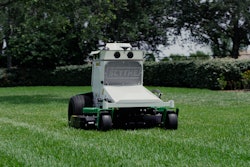
Across the country professional landscape contractors getting ready to start the mowing season. However, it is never too early to start evaluating your fleet and planning for your next machine purchase.
As landscapers begin evaluating machine options, they will be relying on dealers to help them navigate the equipment selection and purchasing process. As a dedicated partner to landscape contractors, it is crucial for dealers to provide counsel for customers as they make decisions that will impact their business financially. This is especially true when it comes to determining whether to lease or purchase equipment.
Just as important as the machine you are purchasing is the way you pay for it. Selecting the right type of financing when you buy new equipment directly impacts your business.
Feeling overwhelmed with the different options?
We’ll walk through each purchase method and the benefits, helping to streamline the process for you.
Deciding how to pay for your equipment
When purchasing a new machine, there are multiple options to help sustain cash flow over time. First, you need to decide if you want to pay for the machine all at once, or if you would prefer to spread out payments over time using a lease or installment loan. If financing is the preferred method, it’s important to determine the right type of financing based on your unique business needs.
There are three primary types of financing: leasing, installment loans, or revolving loans. Each type of financing has its own benefits, but all three offer an opportunity to generate revenue while paying down the balance.
Leasing
Set up as a long-term agreement, an operating lease sets a fixed payment over a predetermined time, often a two- to three-year term. At the end of the term, you have an option to either purchase the machine or return it to the dealer. One advantage of an operating lease is that it can offer lower payments compared to other types of financing, which improves your cash flow throughout the year.
Another benefit is that it allows you to rotate machines every two to three years, ensuring your fleet has new equipment. This can help reduce the risk of potential downtime, minimize exposure to maintenance expenses and allow you to have the latest innovations and technologies available.
Yet another benefit to leasing is the ability to deduct 100 percent of your lease payment as an expense, reducing assets and liabilities because you do not own the equipment. Leasing also preserves bank lines of credit for other business purposes. Additionally, your dealer might be able to match the lease term with a warranty period. This will ensure the machine is under warranty during the entire length of the lease.
How will the equipment be used?
It is important to consider how the equipment will be used before deciding to lease. Lease terms often restrict hours and require the machine to be damage-free when returned, which can be an issue while operating. However, for snow and ice-specific equipment, the machine will only be used seasonally, so hour restrictions are not always an issue. When considering an operating lease, you should talk to your dealer about how you intend to use the equipment to determine if it is the right solution for you.
Installment loans
While installment loans also allow payments to be spread out over time, unlike a lease at the end of the loan term, the customer owns the piece of equipment. This means that there is no limit on hours and damage is not a concern, making it ideal for a customer that might put a lot of hours on a machine. If you decide to proceed with a loan, check with your dealer or lender to see if there are any special financing offers. Sometimes financial institutions will offer incentives such as zero percent interest for a specific period of time, which can help you save money in the long run.
Revolving loans
A revolving loan, or revolving account, is another financing option. This option is primarily used for smaller purchases, but still should be considered for your business. A revolving loan is essentially a credit account, allowing you to add parts, attachments, implements, and other small charges, which will be paid off on a monthly basis. Financial institutions may offer incentives on these types of accounts as well. If you are managing multiple crews, this is ideal as multiple people can go to a dealership to get parts and other items as needed.
Working closely with your dealer
It is important to work with your dealer to discuss your equipment needs. If you are buying equipment like a compact utility tractor or front mower, attachments and implements will allow you to use equipment during summer months and can be rolled into the overall financing of the machine.
When you speak with your dealer or lender, it is important to have answers to a few critical questions that will help you determine the right type of financing for your business:
1. How long will I use this piece of equipment?
2. Do I want to own the machine or operate it at the lowest overall cost?
3. Am I interested in keeping up with the latest technology?
4. Is there a financial benefit at this time for us to lease vs. own?
Discuss your responses with your dealer or lender to help figure out what type of financing makes the most sense for you.
Some manufacturers also provide financing, like John Deere Financial, helping to streamline the process. These manufacturers are in communication with your dealer, familiar with your business needs, and offer customized financing such as seasonal payments, lease damage waivers and hour forgiveness to help you maximize your cash flow. With financing, there are often many options available depending on your business, so an expert will be able to help figure out the best solution for you.
Also consider other options, including attachments, implements, maintenance, and parts. Many customers don’t realize that extra options can be rolled into a financing package, allowing you to get all the tools you need to run your business on one monthly payment. Financing packages will allow you to improve your cash flow and simplify your operational costs.
Making a wise choice
Purchasing or leasing a piece of equipment can seem overwhelming, particularly when you are trying to determine a financing strategy that will positively impact your business. Work with an expert, such as your equipment dealer, who understands the pros and cons of each financing option, as well as your business, to help you make the right decision. Your dealer is committed to your business and strives to help you succeed. By understanding your options and your business needs, you’ll have a new piece of equipment and be out working in no time.












